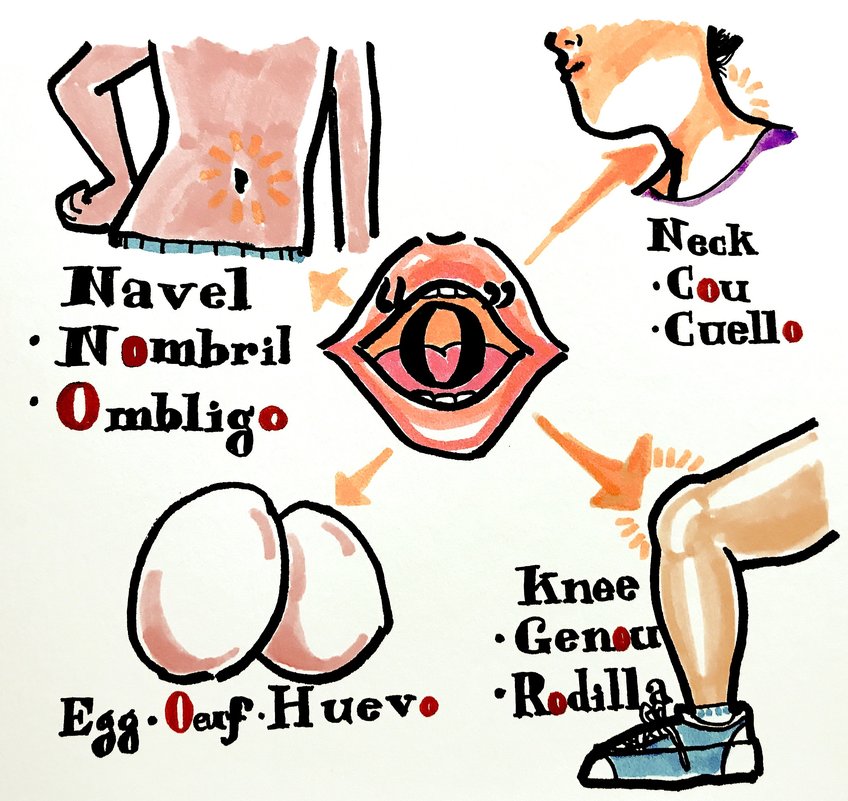
O is a round sound: The relationship between sound and meaning in 66 different languages
Research shows that the sound of some words relates to the concept they refer to
Many linguists have assumed that the relationship between sound and meaning in human languages is completely arbitrary. Take fire, for example: in Mandarin, it is huǒ; in Arabic, nār; and in Finnish, tuli. These words don't quite look alike, which means that the meaning of fire can't be related in any way to how they are expressed in different languages.
But what if some meanings are expressed similarly across different languages? Try to say blow and pay attention to how your mouth moves. Did you notice that the shape your mouth makes is actually similar to when you blow air? If we look at the words for blow (air) in different languages – bulda in Korean, vuvia in Swahili, fúj in Hungarian, fuku in Japanese – they somehow look similar to each other, and more interestingly, similar to the mouth movement of blowing out air.
Rounded vowels (o or u) appear more frequently in words for round things.
A study published in October 2019 in the journal Linguistic Typology by Ian Joo, a PhD student with the Eurasia3angle research group at the Max Planck Institute for the Science of Human History, tested whether some meanings are expressed similarly in unrelated languages around the world. Joo gathered the words for 100 basic concepts (such as water, run, or dog) in 66 unrelated languages. Then, he examined whether any type of sound is equally frequent for a given concept across languages – which should be true if the sound-meaning relationship is completely arbitrary. For example, there is no reason to believe that nasal sounds – such as m or n – are more frequent in words for “water” than in words for “dog.”

Joo showed that such is not always the case. As Joo explains, “rounded vowels – sounds whose pronunciation involves rounding the lips, such as o or u – are more frequent in words that are related to round shapes, be it circular, spherical, hemispheric, or cylindrical." Note that this is only a tendency, not a rule – for example, none of the English words for these four concepts has an o or u. On the other hand, in French, all the corresponding words have a rounded vowel: nombril for “navel”, œuf for “egg”, genou for “knee,” and cou for “neck.”
Sound-meaning relationship in human languages is not completely arbitrary.
If o and u are frequent words for round concepts, what about other sounds and other concepts? Joo also found that words denoting mouth movements – such as blow and suck – tend to contain sounds whose pronunciation resembles those mouth movements. For example, words for blow tend to have a labial sound – a sound articulated by the lips, such as p, b, f, v, w, or u – which replicates the movements made by the mouth when blowing out air. On the other hand, words for suck tend to have the ch sound. “Now we can understand why something like the popular candy Chupa Chups –from the Spanish word chupar which means 'to suck' – actually ‘sound’ like a lollipop to suck on, even if you don't speak Spanish,” says Joo.
These findings support the recently growing idea that in our languages, sounds are not arbitrarily mapped onto concepts, but that sounds that somehow relate to meanings are given preference. As Joo concludes, "sound-meaning association in human languages is not completely arbitrary and conventional but is also significantly motivated by human cognition biases."
